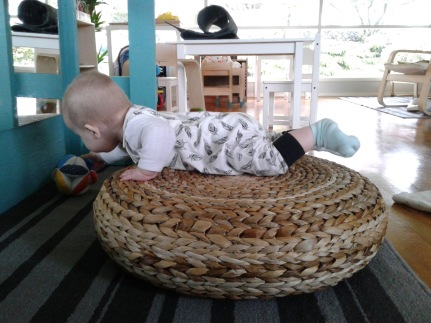I am back with more tips about Montessori at Home. Today we will talk about toys.
There is no such thing as a Montessori toy – Maria Montessori created materials for the classroom not toys (per se) even if we can always argue that these material are toys as they learn through playing with these. Material have specific purposes into the classroom and are meant to be used by Montessori trained Teachers (Guides) for a classroom use – or specific homeschooling use (which also needs training).
What I mean, when I use Montessori friendly toys, is that there are toys that have certain functions that are absolutely aligned and agree with Montessori principles.
There are characteristics for these toys, they can be rotated based on the child’s needs and interests – after you carefully observed your child at play.
First I am going to starts by asking you a question ? Look at these pictures.
How would you describe the toys in the first picture ? The ones on the 2nd picture?
Now here is a list of characteristics for Montessori Friendly toys and see for yourself which picture would be the one we want in our house.
CHARACTERISTICS of Montessori Friendly Toys
We want appropriate toys that fosters concentration, learning and independence.
– Natural material – because they give some sensorial feedback through their texture and warmth – which does not happen with mainstream plastic toys. This does not mean that plastic is to be banned altogether. We need to be smart about our use of plastic.
– Purposeful – We want some toys to isolate a concept so the child works on something specific – something you observed they are into and need. You don’t want all toys to be this way but a few are nice (ex: puzzles)
– Self-correcting – No adult required, the toy gives feedback to the child.
– Open ended material – They foster concentration and focus as well as imagination and creativity and are welcome in Montessori homes. A mix of these with purposeful toys make for hours of independent learning. (ex: building blocks)
– Realistic – No fantasy – No need for a weird cartoon mermaid to make music when your child just needs an instrument to make his own magic happen. Children from 0 to 6 love realistic toys and learn so much from them. It is also less scary and fosters imagination.
– Engaging – the child does the action not the toy – the child should be active not passive (“Active toys make passive learners” like a dear fellow Montessori mom I know would say).
– Fosters independence – Children will always need to connect with us through some of their toys and books, however, lots of toys are just so engaging that the child works by herself and builds self-esteem through it as well.
– Developmentally appropriate – offer toys based on your child’s interests and abilities. You want it to be interesting for the stage they are in and also be challenging so they learn from it through a deep concentration.
– Beautiful – attractive – which does not mean bright colours necessarily or visually busy
 * All toys will not fit in all categories of course but this is meant to be a guideline. I usually go for a minimum of 2-3 characteristics in one toy and I think about this as I am making a list for my daughter for Christmas before handing it to grandparents and godparents. I want quality over quantity.
* All toys will not fit in all categories of course but this is meant to be a guideline. I usually go for a minimum of 2-3 characteristics in one toy and I think about this as I am making a list for my daughter for Christmas before handing it to grandparents and godparents. I want quality over quantity.
This shape puzzle fits in many categories, it is made of natural material and is purposeful as well as self-correcting, realistic and engaging, it is also attractive and pretty but no need for extra. This puzzle has seen hours of work by our daughter from the age of 16 months until 24 months and she still uses it at times and so do some of her older friends during play time. We also have another one similar where shapes are split in 2 or 3 so the challenge is higher – I am telling you, hours of engaging play.
If you have any question or need more support, you can always email me at maritimemontessoriconsultation@gmail.com and I can help you set up your home with Montessori principles in mind.

























